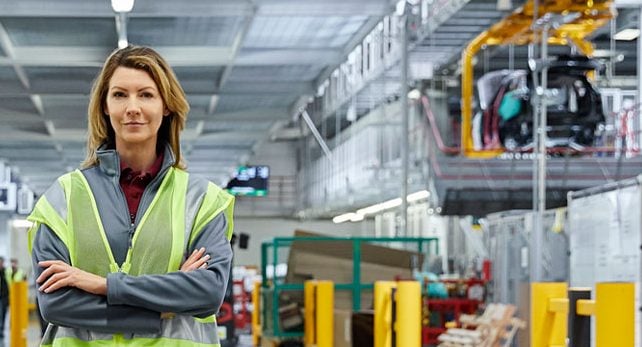
Moving your home is quite possibly one of the most stressful life events imaginable. From mountains of cardboard to weekends of heavy lifting, the process may be long and arduous. But provided you pay some close attention to the logistics, the result is certainly worth it. When it comes to moving your business however, especially one that specializes in manufacturing, there is undoubtedly a wealth of new hurdles to overcome. Here are some tips you might want to consider in your efforts to relocating your manufacturing business.
Step one is learning to not panic, assessing your situation and drawing up a timeline. This can provide you with the foundations on which to move forward with a strong vision. Manufacturing facilities may need to move for a vast array of different reasons. Therefore, whatever yours happens to be, it is worth remembering that it is too far from being out of the ordinary, and it is possible (and difficult). Read on to make your company move take place as smoothly and hitch-free as humanly possible.
Start Planning As Soon As You’ve Decided to Move
Moving a manufacturing business with all of its facilities is a huge project and requires detailed preparation. Most likely you’ll want to minimize downtime and continue production as much as possible during the move. So plenty of advance planning will enable you to account for every detail and be ready for every likely contingency.
As with any office move, you will want to notify key stakeholders of the upcoming move, including customers, investors, suppliers, and your staff. Customers and investors will like to know how the move will affect the business operations; suppliers will need to know how to continue delivering supplies; and your staff will need to know how the move will affect their jobs.
Remember that some workers may not want to remain with the company at the new location. The new facility may be too far away to commute, or they may simply not be comfortable with the move. You’ll need to make arrangements to replace these workers and hire temporary staffing if needed.
Create an Inventory Checklist
The move will probably be expensive enough as it is, so making an inventory checklist is essential if you wish to ensure that you do not lose any valuable items in throughout the process. Machines and equipment can be exceptionally costly to replace. Also, it helps out the moving companies while keeping your records up to date.
A few tips to think about in this area include:
- Taking pictures of your equipment to keep a record of their condition before and after the move.
- Sorting your equipment into categories based on size, fragility and urgency.
- Noting the dimensions of your equipment, as this will help you get set up when you move into your new facility
- Making use of project management software might help you have an easier time visualizing the plan as it gets underway.
Your inventory should include your vital business records and documents, both printed and digital. This includes accounting and payroll, insurance, and legal documents. Whenever you move, it’s easy for things to get lost or misplaced. You’ll want to make sure your business records are kept safe and in order. You might consider making backups of crucial files and storing them offsite. You will also need to update your records with your new business address and the specifications of your new facilities.
Machine Maintenance
To make sure that your machines are in fact functional and will continue to be that way for the foreseeable future, a pre-moving audit is a must.
This is partly because it may not necessarily be worth your time and money to pay for cost of moving larger, older and more unreliable machines, when purchasing a new model could be a better way to go.
If you do happen to discover that some of your machines will not survive the move, or they are in dire need of an upgrade or two, you could always consider outsourcing parts of your manufacturing process before you get fully up and running again.
To ensure your machines, including hot runner systems, remain functional and will continue to be that way for the foreseeable future, a pre-moving audit is essential.
This is partly because it may not necessarily be worth your time and money to move larger, older, and more unreliable machines when purchasing a new model could be a better way to go.
If you discover that some of your machines will not survive the move, or they are in dire need of an upgrade, you could always consider outsourcing parts of your manufacturing process before you get fully up and running again.
For example, say you were working with precious metals, the team at cdocast.com cannot only supply you with new machines, but can offer services for you should you need a helping hand in the meantime.
Assemble a Team for Moving Your Facilities
You will need a dedicated team of workers to carry out the move. These may be different from the team that operates the machinery on a day-to-day basis. You will probably have to supplement your team with temporary contractors and professional movers.
Choosing the Right Movers
One of the most important parts of the facility relocation process is undoubtedly choosing the ideal moving company for the job.
Due to the nature of the equipment and machinery found throughout the vast majority of manufacturing businesses, there is every chance you will need to hire a company that specializes in this particular area. Likewise, even more than one if you have a wide variety of items, but do not mind dealing with the extra logistical puzzle piece.
From heavy machinery moving specialists to factory relocation experts, to find the best company, establishing an open dialogue beforehand is vital.
There are many parts of the process to consider. Such as, the planning, the physical removal of goods, the packaging and transportation. Also, finding a company that respects and acknowledges your specific needs as a company is the best way to go.
Surveying Your New Space
Here’s a tip for your move to go as smoothly as possible. Consider surveying your new space long before your possessions turn up there. This can allow you to get an idea of how to begin setting up your new operation.
This means taking photos and measurements of the space and cross-referencing them with the dimensions of your machinery. The very last ordeal you will need is to have your machines moved across the country, only for them to not fit in your new facility!
It is also worth bearing in mind, that some machines will probably be incredibly awkward to move. Meaning, it is not only is it important to take note of the dimensions. It’s important to decide on the order in which to start setting up. This can help you avoid getting stuck, literally. With this post pandemic world, businesses have been taking a toll. We are here to help you in tumultuous times.
Create a Schedule for the Move
At this point, you will be ready to create a timeline for the move. Fill in as much detail as you can. You will want to schedule relocation of machinery and production equipment so that operations can continue during the move.
Get Your Team on the Same Page
Create comprehensive instructions for every member of the team that will be carrying out the move. This includes detail down to how every machine is to be shut down, transported, and set up at the new location.
Some team members will be responsible for managing contractors and the movers. You will want to clearly describe their responsibilities in that area. Also include instructions for shutting down and vacating your present facility, including cleaning if required, deactivating security systems, and closing utility accounts.
Once everyone knows exactly what it is they have to do, what the new layout should look like, and how to go about setting up, you should be able to start up your operation sooner rather than later.
We hope you found this blog post on A Guide to Relocating Your Manufacturing Business, useful. Check out a similar blog about How to Optimize Your Pallet Wrapping Machine.
Have Experience in the Moving Industry? Want an Additional Income Stream? Work With All Around Moving!
Increasing profits by introducing a new revenue stream to your business is an excellent way to do it. We’ll be there for you every step of the way. Click here to learn more.





